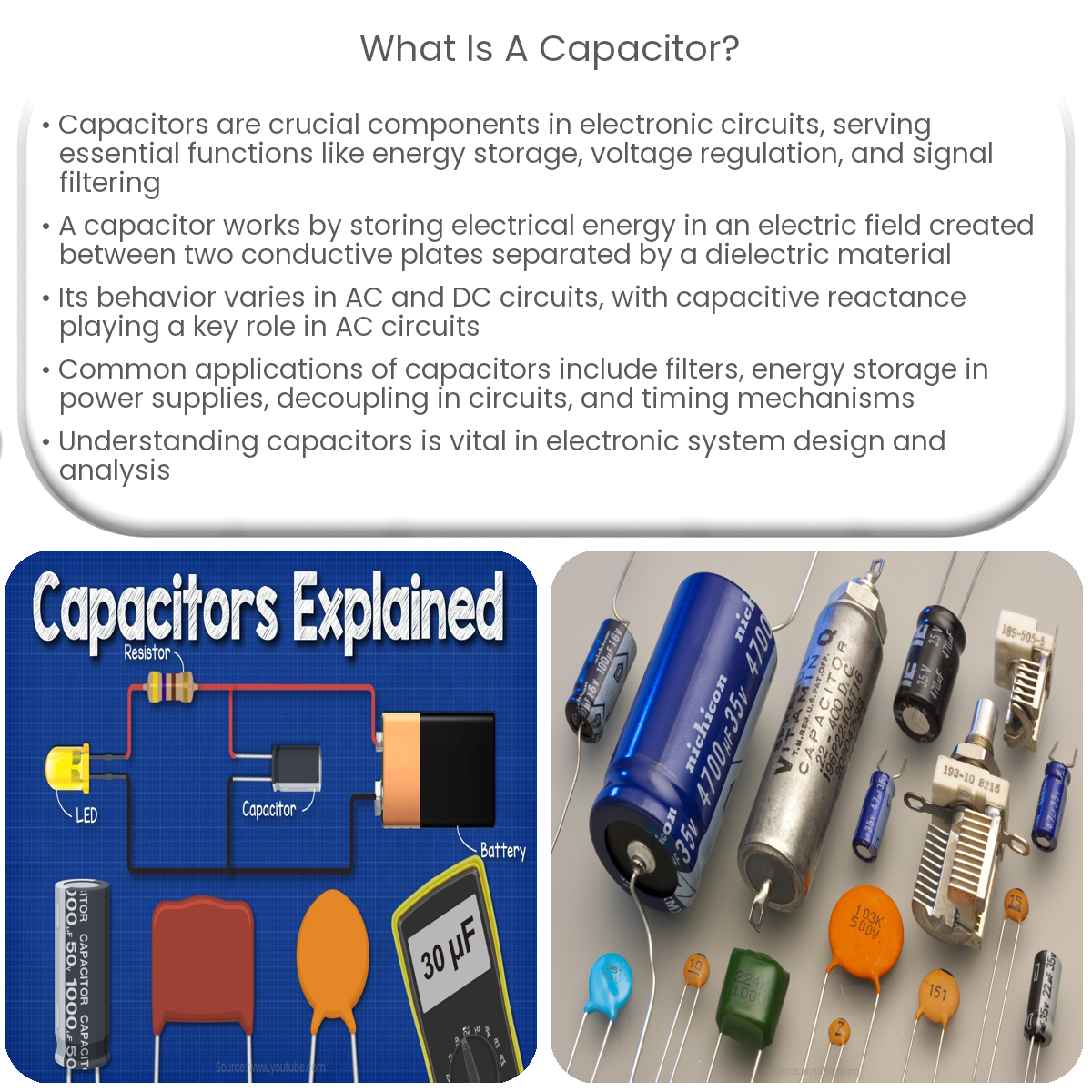A capacitor is a passive electronic component that stores electrical energy in an electric field between its conductive plates.
Introduction to Capacitors
Capacitors are fundamental components in electronic circuits, playing a crucial role in energy storage, filtering, and voltage regulation. This article introduces capacitors, their basic principles, and common applications in electronics.
1. What is a Capacitor?
A capacitor is a passive electronic component consisting of two conductive plates separated by an insulating material, known as a dielectric. The primary function of a capacitor is to store electrical energy in the form of an electric field between its plates when a voltage is applied. Capacitors are characterized by their capacitance, measured in farads (F), which determines their ability to store electrical energy and oppose changes in voltage.
2. How Capacitors Work
When a voltage is applied across a capacitor, it creates an electric field between the conductive plates, causing positive and negative charges to accumulate on the respective plates. The capacitor stores energy in the electric field between its plates, which can be released back into the circuit when needed. Capacitors oppose changes in voltage, a property known as capacitive reactance. In an alternating current (AC) circuit, the capacitive reactance (XC) is inversely proportional to the frequency (f) and capacitance (C) and is given by the formula XC = 1 / (2πfC).
3. Capacitors in AC and DC Circuits
Capacitors behave differently in AC and DC circuits:
- AC Circuits: In AC circuits, the voltage alternates direction, causing the charges on the capacitor’s plates to oscillate. This results in an opposition to changes in voltage, which depends on the frequency and capacitance of the capacitor.
- DC Circuits: In DC circuits, the voltage is constant. When a DC voltage is first applied to a capacitor, it charges up to the applied voltage, and the current flows until the capacitor is fully charged. Once charged, the capacitor behaves as an open circuit, blocking the flow of DC current.
4. Common Applications of Capacitors
Capacitors are widely used in various electronic applications, including:
- Filters: Capacitors, often used with inductors, form filters that can separate or pass specific frequency ranges in a circuit.
- Energy Storage: Capacitors store energy in power supply circuits to provide a stable output voltage by smoothing voltage fluctuations.
- Decoupling: Capacitors are used to isolate different parts of a circuit, preventing noise or voltage spikes from affecting sensitive components.
- Timing Circuits: In combination with resistors or other components, capacitors can create time-dependent circuits for generating delays or oscillations.
Conclusion
Capacitors are essential components in electronic circuits, storing energy in their electric fields and opposing changes in voltage. Their behavior varies between AC and DC circuits, and they have numerous applications in filtering, energy storage, decoupling, and timing circuits. Understanding capacitors is vital for designing and analyzing electronic systems.


